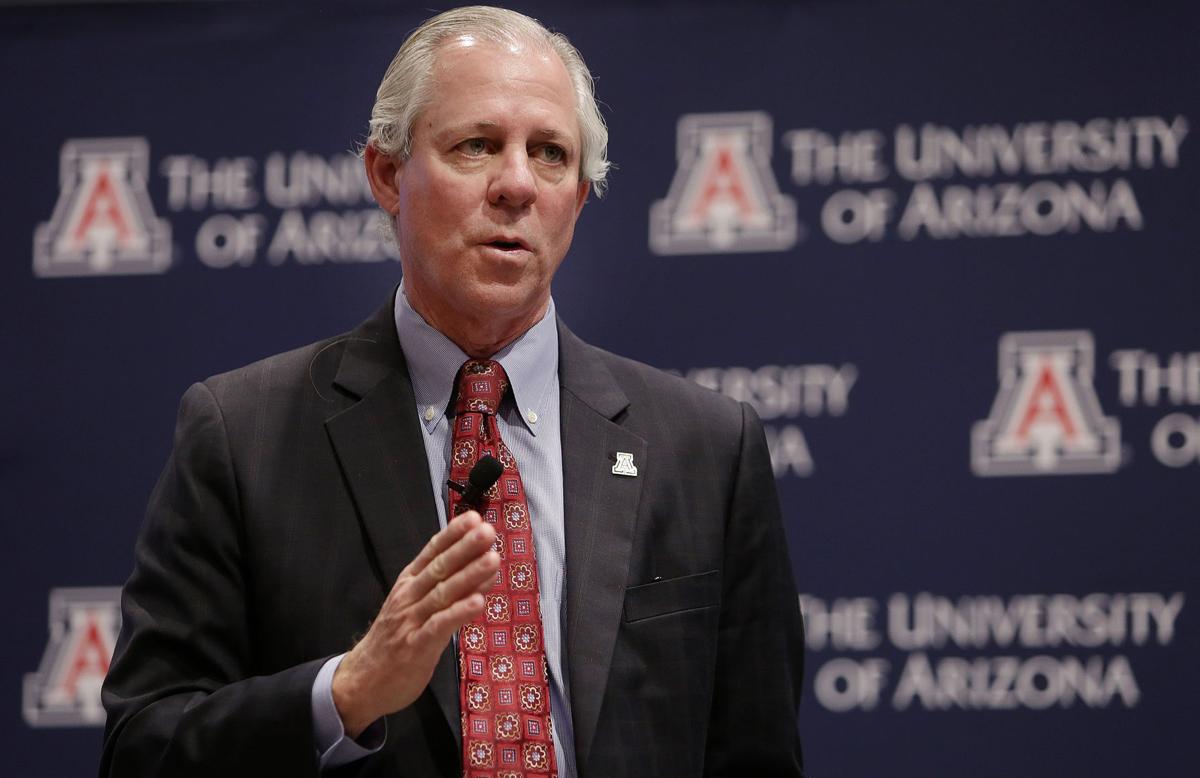The University of Arizona’s new president will earn more than any other university president in state history.
Dr. Robert C. Robbins’ annual compensation will total $988,000 under a three-year contract the Arizona Board of Regents is expected to approve on Friday.
Robbins would assume the UA presidency June 1, clearing the way for current President Ann Weaver Hart to leave the top job more than a year early while still receiving her $670,000 presidential pay package until June 2018.
As a result, the UA will have to spend more than $1.6 million on presidential compensation next school year — the combined total for Robbins and Hart.
Robbins, 59, now makes more than $1.2 million a year as the CEO of Texas Medical Center, and last month told the Arizona Daily Star he expected to take a “major pay cut” once he started his new job in Tucson.
“I’ve never been really motivated by money,” he said.
Robbins’ UA pay would be $12,000 short of $1 million under the regents’ proposed contract. But he’ll also be eligible for performance pay for meeting annual goals to be established later this year, which would likely push him past the $1 million mark if he meets them.
While Robbins’ UA pay package is less than what he makes now, it is $200,000 more than the $788,000 a year earned by Michael Crow of Arizona State University, who runs the state’s largest university and is now the top presidential earner.
Regents staff did not respond Monday to emails seeking comment on whether Crow is likely to get a raise to bring him up to the same pay level as Robbins.
The extra $200,000 for Robbins will be covered by private donations from the UA’s fundraising arm, the University of Arizona Foundation. The foundation was asked a few years ago to provide a similar salary top-up for Hart, but did not do so.
Since then, private donors established an “endowed presidential leadership chair” which will provide an extra $200,000 a year not just for Robbins but for any UA president who follows him, said John-Paul Roczniak, the foundation’s CEO.
“This endowed chair demonstrates the University of Arizona Foundation board of trustees’ commitment to supporting the UA Office of the President in perpetuity and is an investment in the future of this great institution,” Roczniak said in an email interview Monday.
The extra cash “will help the UA attract and retain top leaders” like Robbins, Roczniak said. Robbins has said he plans to remain at the UA for a decade or more.
Robbins was the preferred choice of donors who recently wrote to regents to express opinions on the presidential search. But he was not the top choice of many UA faculty members, who wanted the other presidential finalist, ASU executive Sethuraman Panchanathan, to get the job.
Hart, who drew heavy criticism last year for taking a $170,000 a year side-job on the board of a for-profit university, last June announced plans to step down as president when her contract expires in June 2018. Regents opted to replace her ahead of time and launched a search effort last fall.
Hart will step down May 31 under a provision of her contract called “termination without cause.” It entitles her to “liquidated damages” — her presidential pay package, including housing and vehicle allowances and retirement funding — until her contract ends.
After that, Hart will receive a much smaller paycheck as a tenured faculty member in the College of Education. Her faculty salary will equal that of the highest-paid faculty member in the college, Dean Ronald Marx, who now makes close to $159,000 a year.





